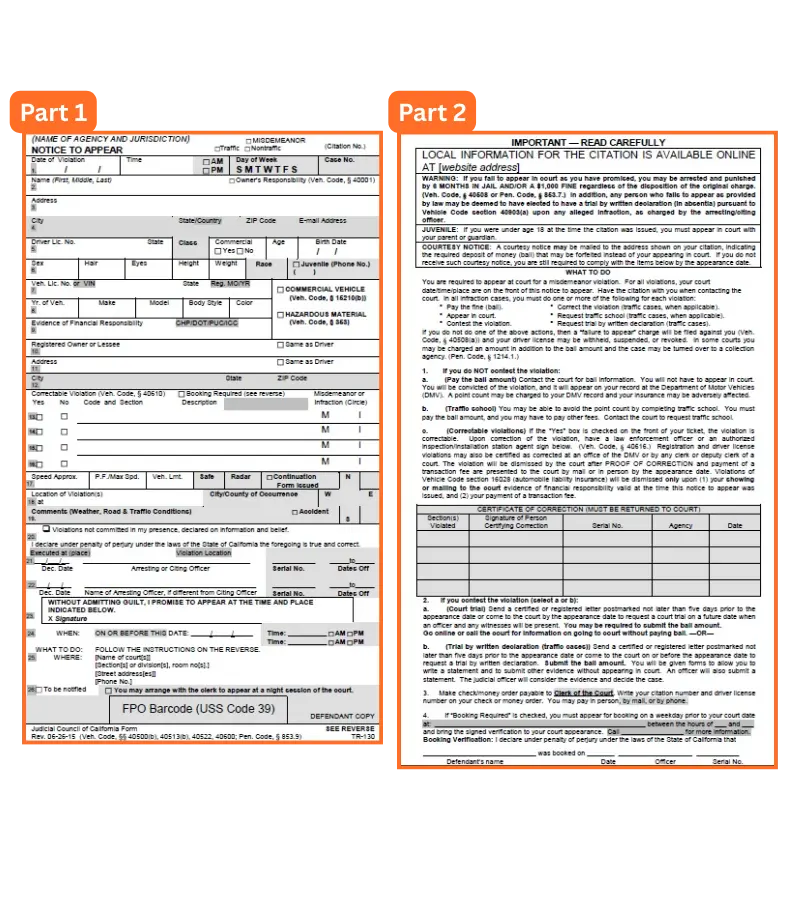Speeding is one of the most common violations in California. Fines start at around $238 and increase with speed. Points on your license also lead to higher insurance premiums.
California law prohibits holding a phone while driving. Even a first offense can cost over $150, and repeat violations add points to your record and heavier fines.
This misdemeanor goes beyond speeding – it includes aggressive or unsafe behavior on the road. In California, reckless driving can lead to license suspension, high fines, and even jail time.
Running a red light or stop sign in California typically carries a fine of nearly $500 and adds a point to your license, which can also raise insurance rates.
Not yielding the right-of-way to other drivers, cyclists, or pedestrians can lead to fines and points. This violation is heavily enforced in California’s busy traffic zones.
California requires every driver to carry proof of financial responsibility. Driving uninsured can result in fines over $800, suspension of your registration, and possible license loss.
To say it simply – we are your best chance at winning. Our pro lawyers have years of experience in courts, successfully slamming thousands of tickets.
We let you know if there’s a win in sight or if your ticket’s a lost cause. You can enjoy not being taken for a ride, just simple straight talk.
Submit your ticket and step back. We offer a valet-like service, taking on the mental load of your ticket, so you don’t have to.
Forget automated responses; at Flickit, you’re guaranteed support from real, empathetic humans – every step of the way. Message us and expect a call-back!
Leave the courtrooms to TV shows. Flickit handles all the real-life legal stuff, because who has time or patience for all that drama?
By keeping your license points down, you’ll avoid your insurance premiums from rising. That’s a lot of money at stake down the line.

The top portion of the California traffic citation is the “Notice to Appear”. It records all critical identification and offense information. It begins with the agency name, jurisdiction, and citation number, followed by the type of violation whether it’s an infraction, misdemeanor, or traffic offense. This section includes the driver’s full name, address, date of birth, and driver’s license number, as well as vehicle information (make, model, year, color, license plate number, and VIN).
The officer also checks if the vehicle was a commercial vehicle or transporting hazardous materials. Below that, the violation section lists the specific California Vehicle Code (CVC) violated such as speeding, running a red light, or failing to stop at a sign. It also includes the violation location, date, and time, along with environmental details like lighting, weather, and road conditions. The officer then signs the ticket, certifying the information under penalty of perjury. The bottom part of Part 1 is the defendant’s promise to appear your signature confirming you will address the ticket by the indicated court date, either by appearing, paying, or resolving it through other permitted means.
The reverse side provides the official instructions and legal information you must read carefully. It explains your rights, responsibilities, and available options after receiving a citation. The top section warns that failure to appear or take action by the due date can result in additional penalties, suspension of your driver’s license, or even a warrant for your arrest. It also provides information for juvenile drivers and reminds them that a parent or guardian must appear in court. It then lists options to handle your citation:
A dedicated table near the bottom titled “Certificate of Correction” allows verification by a police officer or agency for corrected equipment violations. Each correction must be signed and stamped by an authorized official. The lower section reiterates deadlines, payment methods, and appearance procedures – ensuring you understand when and how to respond. Failure to comply can result in additional fees, license suspension, or a referral to collections.